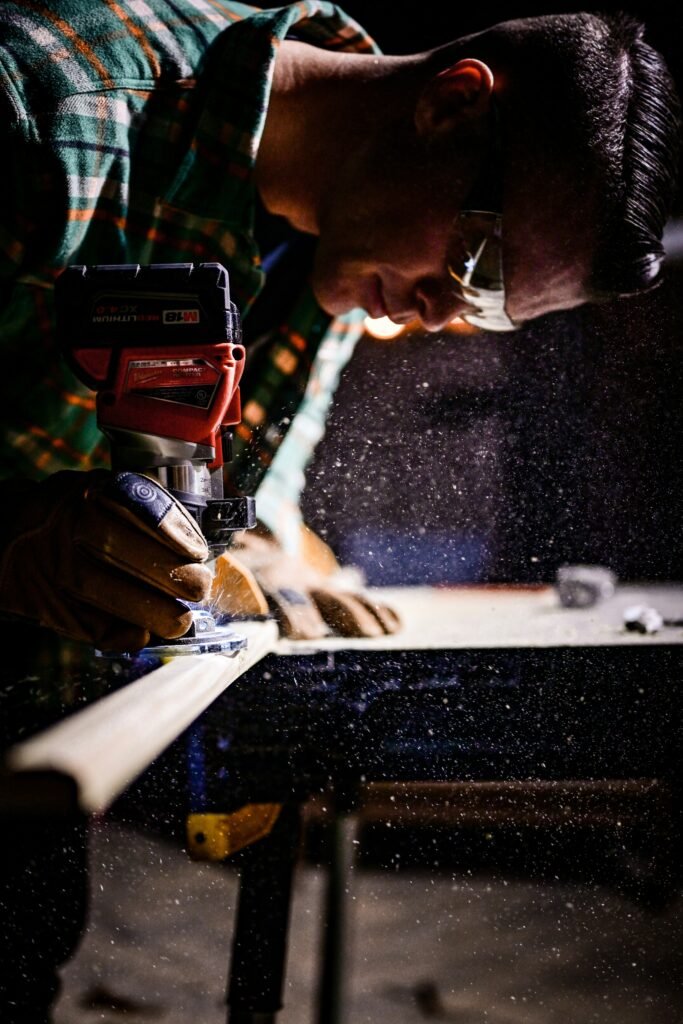
Are you tired of constantly shelling out money for scooter repairs? Look no further as we present “DIY Scooter Repairs 101,” the ultimate guide to fixing your scooter on your own. Say goodbye to expensive mechanic bills and hello to empowering yourself with the knowledge and skills to keep your scooter running smoothly. In this article, we will explore a range of common scooter problems and provide step-by-step instructions on how to fix them yourself. So grab your toolbox and get ready to become a DIY scooter repair expert!

This image is property of images.unsplash.com.
Check out our product reviews!
Tools Needed
To successfully repair and fix your scooter, you’ll need a few key tools. Here are the basic tools you’ll need:
- Wrench set
- Screwdriver set
- Allen key set
- Tire pump
- Pliers
- Wire cutters
- Multimeter
In addition to these basic tools, you may also need some specialized tools depending on the specific repair or fix you’re working on. It’s always a good idea to have the right tools on hand to ensure a smooth and successful repair process.
Common Scooter Issues
Scooters, like any other form of transportation, can experience various issues over time. Knowing the common issues can help you identify and address them effectively. Here are some of the most common scooter issues:
Flat Tire
Dealing with a flat tire can be a frustrating experience. Whether it’s caused by a puncture or simply wear and tear, it’s important to know how to fix it. The process involves removing the wheel, replacing the inner tube, and reinstalling the wheel. Don’t worry, we’ll guide you through each step.
Brake Problems
Faulty brakes are a safety concern and should be addressed promptly. If your brake pads are worn out or the cable tension needs adjustment, you can learn how to inspect the brake pads, adjust the cable tension, and even replace the brake pads yourself. Rest assured, you can regain full control of your scooter’s braking system with a little knowledge and effort.
Battery Issues
When your scooter’s battery starts causing problems, it’s crucial to address them to ensure the scooter’s performance and longevity. This could involve removing the old battery, choosing the right replacement battery, and installing the new battery correctly. By following the proper steps, you can get your scooter back up and running in no time.

This image is property of images.unsplash.com.
Check out our product reviews!
Fixing a Flat Tire
One of the most commonly encountered issues with scooters is a flat tire. Fortunately, fixing a flat tire is a relatively simple task that can be done with some basic tools and a little guidance.
Removing the Wheel
To fix a flat tire, you’ll first need to remove the wheel from your scooter. Start by loosening the bolts or quick release mechanism that attaches the wheel to the scooter frame. Once the wheel is free, carefully remove it from the scooter.
Replacing the Inner Tube
Next, you’ll need to replace the inner tube of the tire. Begin by deflating the tire completely and then use a tire lever to remove the tire from the rim. Once the tire is removed, inspect the inner tube for any punctures or damage. If necessary, replace the inner tube with a new one.
Reinstalling the Wheel
After replacing the inner tube, it’s time to reinstall the wheel. Carefully align the wheel with the scooter frame, making sure the axle fits securely into the fork. Tighten the bolts or use the quick release mechanism to fasten the wheel back in place. Make sure the wheel spins freely and the tire is properly inflated before taking your scooter for a spin.
Fixing Brake Problems
Maintaining properly functioning brakes is essential for your safety while riding a scooter. If you’re experiencing brake issues, it’s important to address them promptly.
Inspecting the Brake Pads
Start by inspecting the brake pads for wear and tear. If they are worn down and no longer provide sufficient grip, it’s time to replace them. Use a wrench or Allen key to remove the brake pad retaining bolt and slide out the old brake pads. Install new brake pads in their place and secure them with the retaining bolt.
Adjusting the Brake Cable Tension
If your scooter’s brakes feel loose or sluggish, adjusting the brake cable tension can help restore their functionality. Locate the brake cable adjuster and turn it clockwise to tighten the cable, or counterclockwise to loosen it. Test the brakes after each adjustment until they feel responsive and secure.
Replacing the Brake Pads
If your brake pads are beyond repair or adjustment, it’s necessary to replace them entirely. Follow the same steps mentioned earlier for inspecting the brake pads, but instead of reusing the existing pads, install new ones. Make sure to properly align the brake pads with the rotor or drum before securing them in place.

This image is property of images.unsplash.com.
Replacing the Battery
When your scooter’s battery starts to fail, it’s crucial to replace it promptly to avoid further issues. Here’s how you can do it yourself:
Removing the Old Battery
Start by locating the battery compartment on your scooter. Use a wrench or screwdriver to loosen the bolts or screws that secure the battery in place. Carefully disconnect the cables, taking note of their positions, and remove the old battery from the compartment.
Choosing a New Battery
When selecting a replacement battery, make sure it’s compatible with your scooter model. Consider factors such as voltage, capacity, and physical dimensions. Consult your scooter’s manual or a knowledgeable professional for guidance if needed.
Installing the New Battery
Once you have the new battery, carefully place it in the battery compartment, ensuring it is securely positioned. Reconnect the cables to their respective terminals, ensuring the proper polarity. Tighten the bolts or screws to secure the battery in place. Double-check all connections and make sure they are snug. Your scooter should be ready to go!
Cleaning and Lubricating
Regular cleaning and lubrication can significantly extend the lifespan of your scooter and keep it operating smoothly. Here’s how you can properly clean and lubricate your scooter:
Cleaning the Scooter
Start by using a soft cloth or sponge and a mild detergent to clean the exterior of the scooter. Pay attention to hard-to-reach areas and remove any debris, dirt, or grime. Rinse the scooter with clean water and make sure to dry it thoroughly before moving on to lubrication.
Lubricating Moving Parts
Apply a lubricant specifically designed for scooters to the moving parts that require lubrication. This includes the scooter’s chain, bearings, and any other joints or pivot points. Follow the manufacturer’s instructions for the specific lubricant you’re using. Excess lubricant should be wiped off to prevent attracting dirt or dust, which can cause damage over time.
Troubleshooting Electrical Issues
Electrical issues can sometimes arise with scooters, but don’t fret – there are steps you can take to troubleshoot and resolve them.
Checking the Fuse
If an electrical component of your scooter stops working, the first thing to check is the fuse. Locate the fuse box, which is typically located near the scooter’s battery compartment. Remove the fuse and visually inspect it. If the filament inside is broken, replace it with a new fuse of the same rating.
Testing the Connections
Check all electrical connections, such as wires and terminals, for signs of corrosion or damage. Ensure that all connections are secure and tightly fastened. If any wires appear frayed or damaged, they should be replaced.
Replacing Faulty Wires
If you’ve determined that a wire is faulty or damaged, it’s important to replace it. Start by identifying the wire that needs to be replaced and carefully remove it. Use wire cutters to cut a new piece of wire to the appropriate length. Strip the insulation from the ends of the new wire and connect it to the appropriate terminals or connectors. Make sure all connections are secure and test the electrical component to ensure it’s working properly.
Fixing Loose Handlebars
If you’ve noticed that your scooter’s handlebars feel loose or wobbly, it’s important to address this issue before it worsens.
Tightening the Bolts
Start by locating the bolts that secure the handlebars to the scooter’s stem. Use a wrench or Allen key to tighten these bolts, making sure they are snug but not over-tightened. Check the handlebars for any remaining looseness or wobbling.
Adjusting the Stem
If tightening the bolts doesn’t resolve the issue, you may need to adjust the stem. With the scooter on a level surface, locate the stem and the top cap bolt on the headset. Loosen the top cap bolt slightly and then tighten the stem’s bolts until the handlebars are secure and straight. Finally, tighten the top cap bolt to ensure the stem is properly adjusted.
Replacing the Scooter Chain
Over time, the chain on your scooter may become worn or damaged, diminishing its performance and safety. Here’s how you can replace the chain:
Removing the Old Chain
Start by loosening the tension on the chain by adjusting the rear wheel position. Use a chain tool or a chain breaker to disconnect the old chain by pushing out the pin. Once the chain is disconnected, remove it from the scooter.
Choosing the Right Replacement Chain
Select a replacement chain that matches the specifications of your scooter. Consider factors such as the number of links, the width, and the type of chain (e.g., single-speed or multi-speed).
Installing the New Chain
With the new chain in hand, carefully thread it through the scooter’s sprockets and derailleur (if applicable). Reconnect the chain using a chain tool or breaker, ensuring it is properly aligned with the chainring and rear cassette. Adjust the rear wheel position and tighten bolts to achieve the appropriate chain tension. Test the scooter’s drivetrain to ensure the chain is running smoothly and securely.
Upgrading Scooter Parts
If you’re looking to improve your scooter’s performance or simply add some personal flair, upgrading certain scooter parts can be a fun and rewarding project.
Choosing the Right Upgrades
Before diving into the world of scooter part upgrades, it’s important to research and select the right upgrades for your specific scooter model. Consider factors such as compatibility, quality, and your own personal preferences. Popular upgrade options include wheels, brakes, handlebars, and suspension components.
Installing Upgraded Parts
Once you have chosen your desired upgrades, follow the manufacturer’s instructions for each specific part. Depending on the upgrade, you may need to remove existing parts and replace them with the new ones. Take care to properly tighten bolts and secure all connections. Test your scooter thoroughly after each upgrade to ensure proper functionality and safety.
With these comprehensive DIY scooter repairs and fixes, you’ll be able to keep your scooter in top condition and address any issues that arise. Remember to always prioritize your safety and consult professional help if you’re unsure about any repair process. Happy riding!



